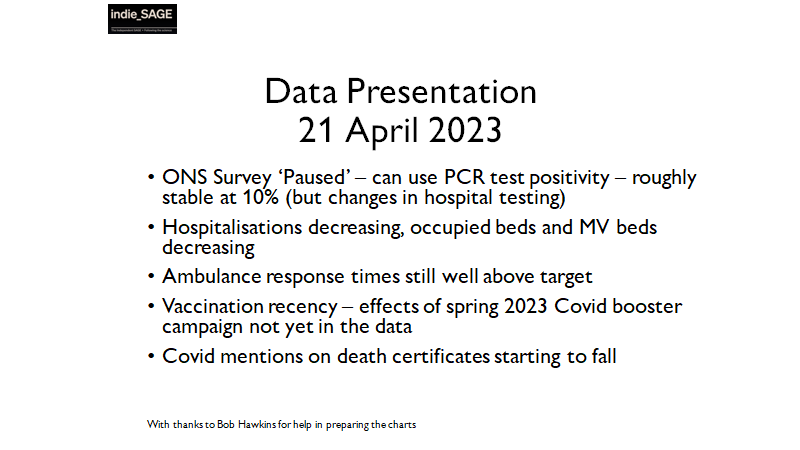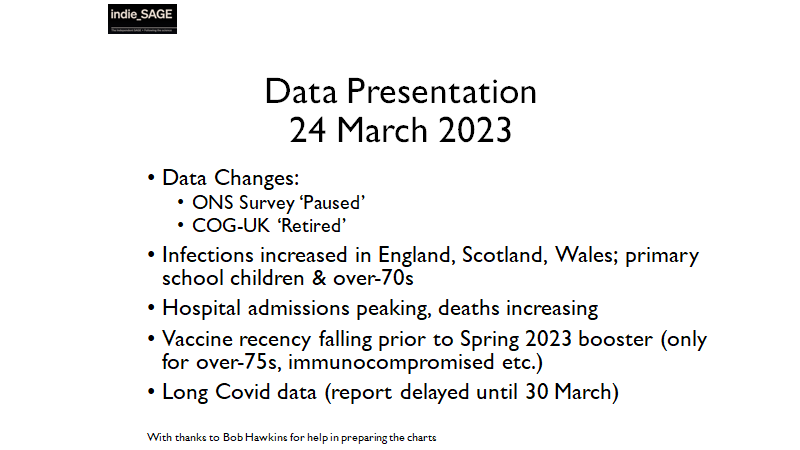The @ONS Infection Survey for antibody and vaccination data has been published here ons.gov.uk/peoplepopulati…
A thread.
A thread.

"In England, ... 54.9% of the population (95% credible interval: 49.5% to 60.0%) would have tested positive for antibodies against the coronavirus (COVID-19)... on a blood test in the week ending 28 March 2021, suggesting they had the infection in the past or have been vaccinated
Imporant caveat:
"Across all four countries of the UK, there is a clear pattern between vaccination and testing positive for COVID-19 antibodies **but the detection of antibodies alone is not a precise measure of the immunity protection given by vaccination**.
"Across all four countries of the UK, there is a clear pattern between vaccination and testing positive for COVID-19 antibodies **but the detection of antibodies alone is not a precise measure of the immunity protection given by vaccination**.
Note the fall in over-70s.
These should be getting their second doses, so hopefully this will increase.
Note *there is not 100% antibodies detected even if you're vaccinated (but these vaccines are effective - not 100% effective)
These should be getting their second doses, so hopefully this will increase.
Note *there is not 100% antibodies detected even if you're vaccinated (but these vaccines are effective - not 100% effective)

So:
- levelling off in detected antibodies
- particularly for the over-70s
- vaccines give benefits not just through antibodies
- vaccines are effective, but not 100% effective
And
- get vaccinated
- get your second dose when called
- 'cry freedom' isn't a great idea right now.
- levelling off in detected antibodies
- particularly for the over-70s
- vaccines give benefits not just through antibodies
- vaccines are effective, but not 100% effective
And
- get vaccinated
- get your second dose when called
- 'cry freedom' isn't a great idea right now.
• • •
Missing some Tweet in this thread? You can try to
force a refresh























